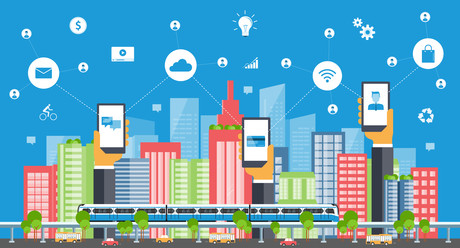Roadmap to drive smart buildings market

The Green Building Council of Australia’s ‘Carbon Positive Roadmap’ will drive the smart buildings market, according to Smart Cities Council Australia New Zealand.
Developed in close consultation with industry and government, the discussion paper establishes the steps required for commercial, institutional and government buildings and fit-outs to decarbonise. It outlines the high-level outcomes, actions, targets and policy positions required. These are proposed alongside changes to the GBCA’s Green Star rating tool to ensure it helps lead industry through the next decade of transformation.
GBCA Chief Executive Romilly Madew said the roadmap has been developed to help ensure Australia’s competitiveness and attractiveness for investment while fulfilling international commitments to reducing carbon emissions.
“This roadmap was developed as a response to GBCA’s vision of healthy, resilient and positive places for people and the natural environment and is the result of extensive industry and government consultation and engagement,” said Madew.
“It proposes a range of policy positions for industry to support and calls for upgrades to energy efficiency requirements in the national construction code and an expansion of requirements for the mandatory disclosure of energy efficiency in buildings and fit-outs. Broader reforms in the energy sector are also discussed, with practical incentives to support building upgrades and retrofits and the development of carbon neutral products and services.
“As a signatory to the Paris Climate Change Agreement and the UN’s 17 Sustainable Development Goals, the Australian Government’s continued support is needed to bring carbon emissions down.
“Our roadmap supports the work of the World Green Building Council, which earlier this month launched its Net Zero Carbon Buildings Commitment, and means we are leading the emissions reductions charge, as one of only five Green Building Councils to have a net zero carbon buildings certification scheme in place.
“Whether you are a developer, building owner, industry professional, product manufacturer, building occupant or policymaker, this roadmap will help you lead in the delivery of a more sustainable built environment,” said Madew.
The roadmap proposes a significant increase in performance for buildings and fit-outs over the next decade. It is being developed in tandem with Green Star Future Focus — a comprehensive review of existing Green Star rating tools to set leading targets for certification.
Buildings seeking a Green Star rating would have to meet updated requirements — with a proposal that new and existing Green Star rated buildings will have no greenhouse gas emissions by 2030 and existing buildings having to meet this target by 2050 or earlier.
The roadmap also acknowledges the contractual, policy and commercial barriers that discourage joint action between building owners and tenants to address whole-of-building emissions. “Achieving the roadmap’s targets requires a whole-of-building approach,” Madew said.
“Where the building owner has control over the fit-outs and energy use, changes are easier to implement. However, in buildings where there is a contractual relationship with another party, collaboration and cooperation is needed.
“Problems can be overcome by first incentivising decarbonisation, then requiring collaboration between all parties to share energy data. Encouraging the use of operational ratings will drive both parties to use renewable energy,” said Madew.
National cybersecurity body to protect consumer energy resources
NEPKI will deliver secure, interoperable and compliant digital identity and encryption services...
Safety tech designed for smart cities
The upcoming Secutech Thailand expo will showcase a host of international security and fire...
Online platform for industrial automation sector
Treotham has introduced TreoShop, a straightforward online platform designed to provide easy...




